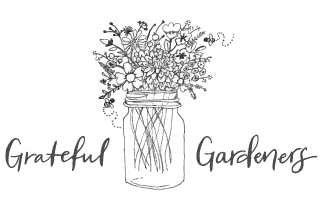What is Sustainable Farming?
The term “sustainable” gets thrown around a lot these days in the spirit of trying to improve our planet’s health and preserve its natural resources. But do we have a consensus definition? How do we know some method or practice is sustainable? How do you measure sustainability? Let’s start with a basic definition, and then explore how farming can achieve this level, and more importantly, flower farming…
“of, relating to, or being a method of harvesting or using a resource so that the resource is not depleted or permanently damaged”
Don’t Compete with Nature
It’s a simple idea; Nature knows how to grow plants, why get in its way or make it work harder? Perhaps if we just amplified and supported the mechanisms in place that foster plant health and growth, maybe we can reap the greatest yields AND sustain our natural resources. Or maybe even replenish those resources?! What a concept!
The metrics that we use to measure sustainability are a bit nebulous to be honest. It’s somewhat difficult to know when you are creating a net neutral outcome from your growing. That level of dedication is challenging to fulfill, so ultimately at a basic level, growers just try to implement practices they know are sustainable in the hopes that we can get close to net neutral.
But where does a farmer or gardener start, if they want to be more sustainable in their practices? Below are some of our prized resources that guide us in our organic and sustainable pursuits.
Books on Sustainable Farming
The Teaming Trilogy
Teaming with Microbes
A critical foundation to sustainable farming is understanding and bolstering the soil food web. What is it? What composes it? How does it work? This book answers these questions and teaches you how to work with it to promote healthy soil that needs few and infrequent inputs to produce bountiful flower harvests!
The new organic grower
Eliot Coleman has been doing the organic “thing” for 3 plus decades and is one of the seminal leaders in the field. This is another indispensable guide to growing organic and sustainable plants.
Teaming with Fungi
Mycorrhizae! Learn to pronounce it (my-co-rise-eh) and love it! 95% of plants form a symbiotic relationship with mycorrhizae in the soil at the root interface. This relationship between plant roots and fungi evolved hundreds of millions of years ago and has persisted because both fungi and plants benefit. Fungi get sugars, that they can’t produce themselves, from the plants, and the plants get nutrients they can’t get easier either. It supercharges plant growth to have healthy Mycorrhizae in the soil!
The Biological Farmer
Gary Zimmer is the legendary pioneer of “biological farming”, which is an old-fashioned way of saying “sustainable farming”. It focuses on soil health, creating the conditions by which soil organisms thrive, and how to reap the benefits of these efforts. It’s a must-read for any organic, sustainable farmer.
Teaming with Nutrients






